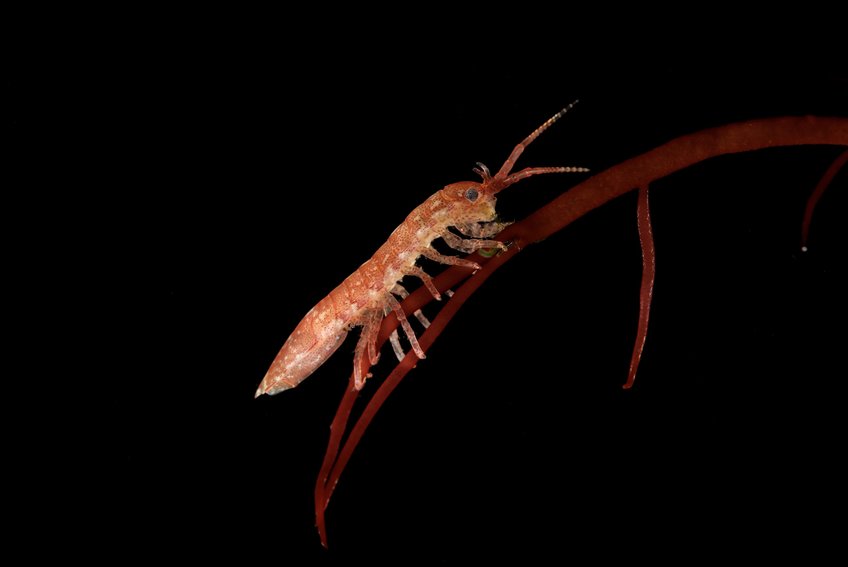Bee of the sea: A small marine isopod aids in pollinating red algae
Until recently, pollination was thought to be exclusive to land plants. An international team of researchers has now discovered that small crustaceans improve the reproduction rate of red algae by transporting the sperm from the male to the female algae. Their results suggest that animals have had a role in fertilization of other species for much longer than previously believed.

The marine isopod Idotea balthica
© Wilfried Thomas, Station Biologique de Roscoff (SBR)
Flowers and numerous other land plants rely on animals for fertilization; bees and hummingbirds, even bats and lizards carry pollen from a male to a female plant. In contrast, until recently, it was consensus that marine algae do not receive such animal help. An international research team lead by Myriam Valero who, based at the Station Biologique de Roscoff (CNRS, Sorbonne Université, Pontificia Catolica Universidad de Chile and Universidad Austral de Chile), France, now overturned this long-held belief: they showed that the small crustacean Idotea balthica helps pollinate the red alga Gracilaria gracilis.
Red algae benefit from the pollination by crustacean
The crustaceans, comparable in size to an ant, use the densely branched, bushy red algae for shelter and feed on microalgae that grow on their surface. The researchers now showed that they return the favor by significantly increasing the algae’s fertilization rates: when they graze on a male alga, the sperm growing on its surface sticks itself to their bodies by help of a glutinous substance. Upon contact with a female alga, the sperm attaches itself to its reproductive structure and fertilizes the eggs.
The researchers are now curious to find out if other algal species are also pollinated with the help of animals. For the red alga, the help of the crustaceans is particularly relevant: their sperms cannot move on their own, so that fertilization success highly depends on propitious water currents and proximity of the male and female algae.
Pollination process may have origin in oceans
However, how important exactly the marine isopods are for algal mating was not examined by the study:
„One of the challenges was to properly locate and document the many small gametes, only a few micrometers in size, on an equally microscopic but 1000 times larger body surface of these small crustaceans”, says Sébastien Colin, researcher at the Max Planck Institute for Biology in Tübingen, coauthor of the study and involved in the microscopic examination.
The findings are particularly impactful since until recently, fertilization with the help of animals was believed to have originated in land plants about 140 million years ago. Red algae, by contrast, are roughly six times older than that. The researchers now suggest that fertilization by animals started even before plants moved ashore.







